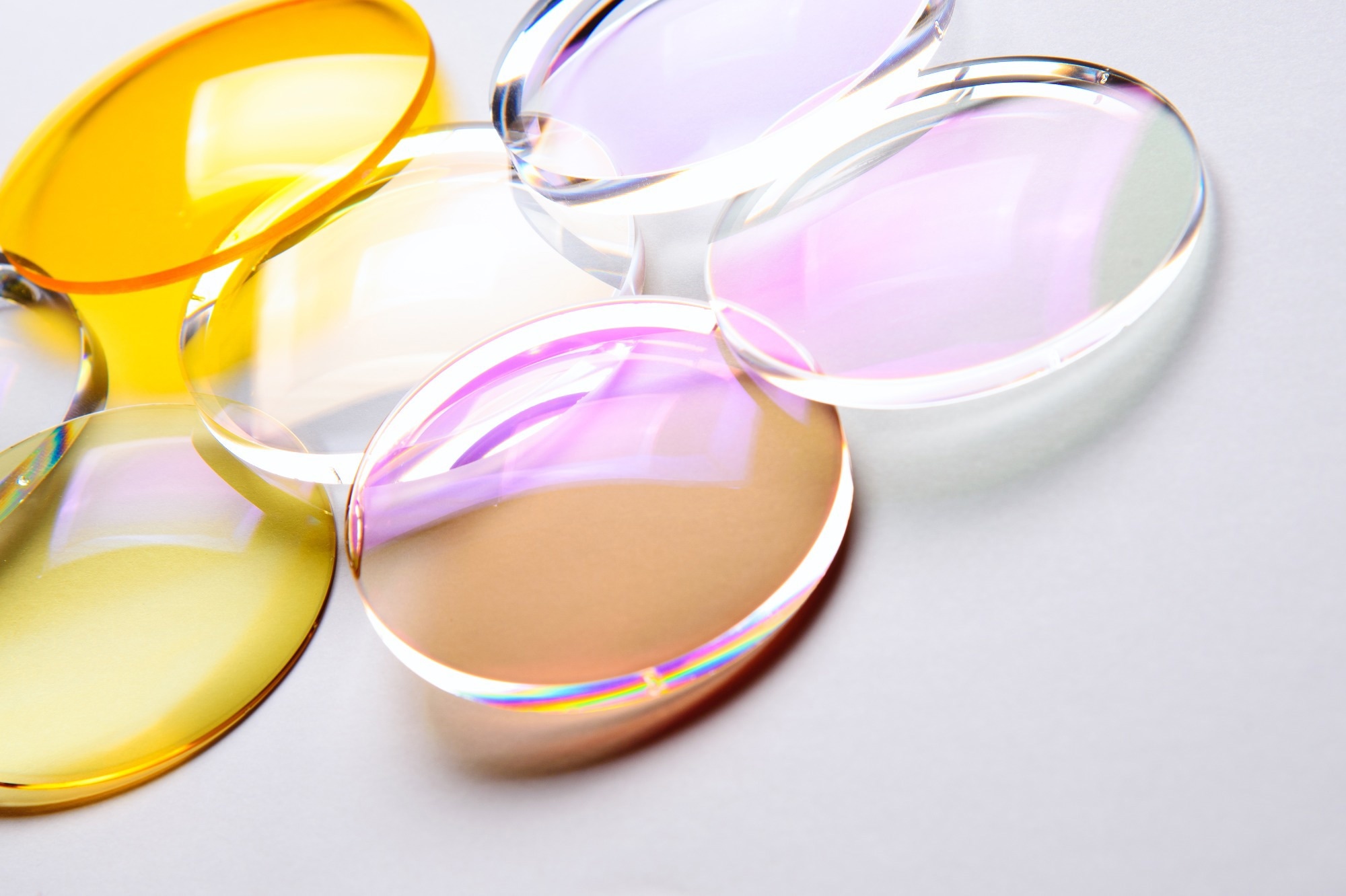Anti-Reflection (AR) coatings represent a key innovation in optics. AR coatings are central to the proper manipulation of light, mitigating Fresnel reflection, enhancing system throughput and minimizing hazards caused by reflections.
These coatings are an essential feature of various applications, ensuring system stability and maintaining optimal light transmission.

Image Credit: Kryuchka Yaroslav/Shutterstock.com
Fresnel Reflection and Its Impact
At every transition between air and uncoated glass, about 4 % of light is lost due to Fresnel reflection, which decreases the total light transmission to 92 %. This significant loss highlights the importance of applying AR coatings to enhance light transmission efficiency across various applications.
AR Coatings
AR coatings work by introducing a 180° relative phase shift between reflected beams, resulting in destructive interference that minimizes reflections. For this interference to be effective, the optical thickness of the coating must be precisely matched to the design wavelength.
Composition and Characteristics: AR coatings can range from simple single-layer designs to more complex multi-layer structures, which allow for adjustment across a broader bandwidth. Their effectiveness, however, is optimized at or close to the designated design wavelength.
Reflectivity and Tolerances: The primary objective of AR coatings is to reduce reflectivity to significantly less than 0.25 %. They are designed to tolerate small shifts in the design wavelength without substantially losing performance.
Broadband Anti-Reflection (BBAR) Coatings
BBAR coatings offer greater versatility over a wider range of wavelengths versus conventional AR coatings. These coatings may not attain the same low reflectivity values as AR coatings, but they are invaluable for applications working with lasers emitting multiple wavelengths or broad-spectrum light sources.
Versatility and Applications: BBAR coatings see widespread use in optical components such as windows and lenses, especially in systems where a single narrow-band AR coating may not offer sufficient anti-reflection performance. BBAR coatings are also ideally suited to minimizing reflections in laser and nonlinear crystals.
Considerations and Performance: BBAR coatings are able to effectively balance enhanced performance over a broad wavelength range with somewhat higher reflectivity values when compared against coatings optimized for specific wavelengths. This trade-off is essential for applications that require versatility.
Applications Across Wavelength Ranges
BBAR coatings can accommodate various wavelength ranges, including visible, UV, NIR, and SWIR. This allows these coatings to offer highly customizable solutions for different optical needs.
Source: Shanghai Optics
| UV (250-380 nm) |
Our UV broadband anti-reflection coating R(avg) ≤ 1% @ 250 – 425 nm |
| VIS (380-750 nm) |
Our visible broadband anti-reflection coating R(avg) ≤ 0.5% @ 350 – 750 nm |
| NIR (750-900 nm) |
Our NIR broadband anti-reflection coating R(avg) ≤ 0.7% @ 750 – 900 nm |
| SWIR (900-1700 m) |
Our SWIR broadband anti-reflection coating R(avg) ≤ 1.0% @ 900 – 1700 nm |
Regardless of the application, properly understanding and correctly implementing AR and BBAR coatings is key to optimizing optical system performance and reducing unwanted reflections.
As technology continues to advance, coatings’ tailored designs and their capacity to improve light transmission will see them becoming increasingly central to the success of optical engineering applications across a wide range of industries.
Acknowledgments
Produced from materials originally authored by Shanghai Optics Inc.

This information has been sourced, reviewed and adapted from materials provided by Shanghai Optics.
For more information on this source, please visit Shanghai Optics.